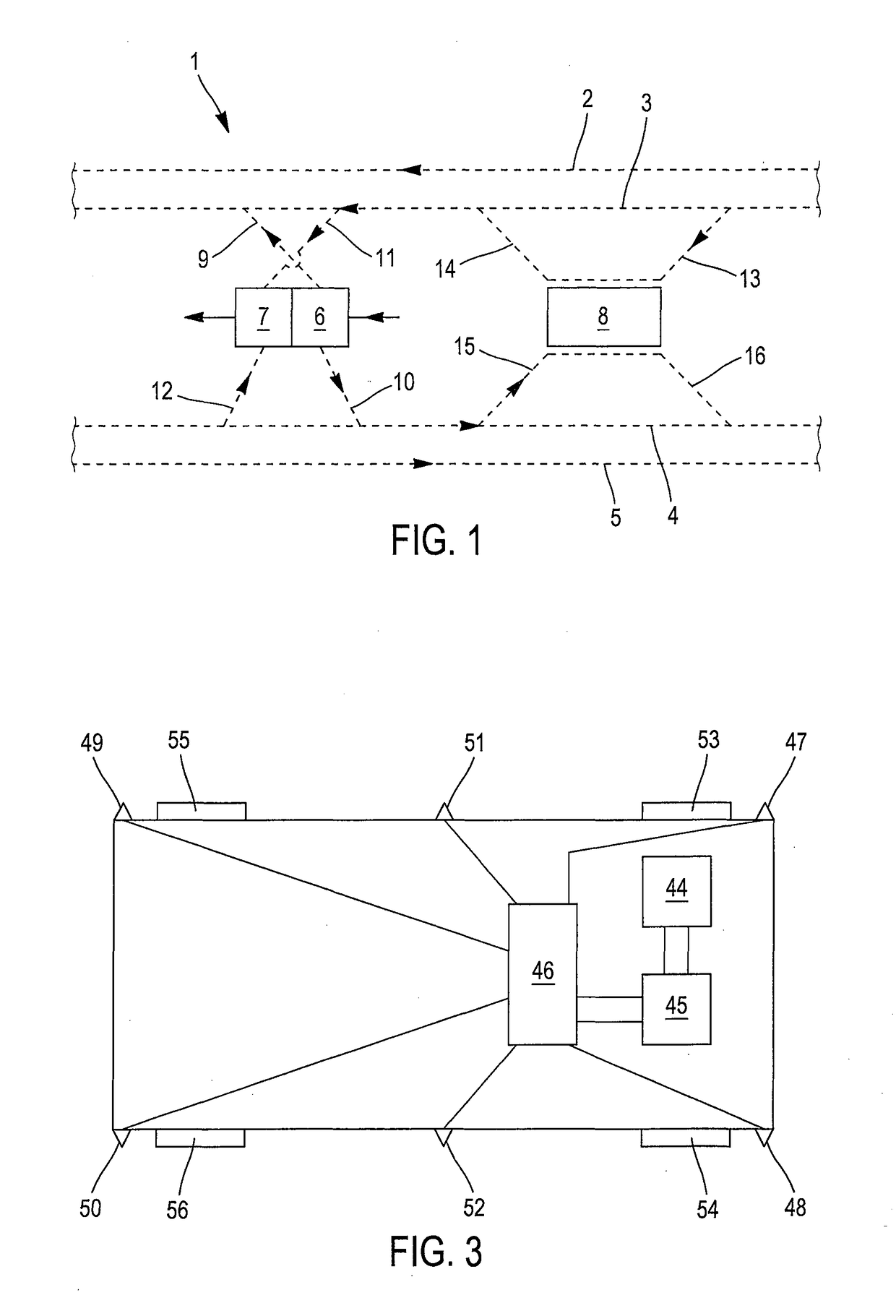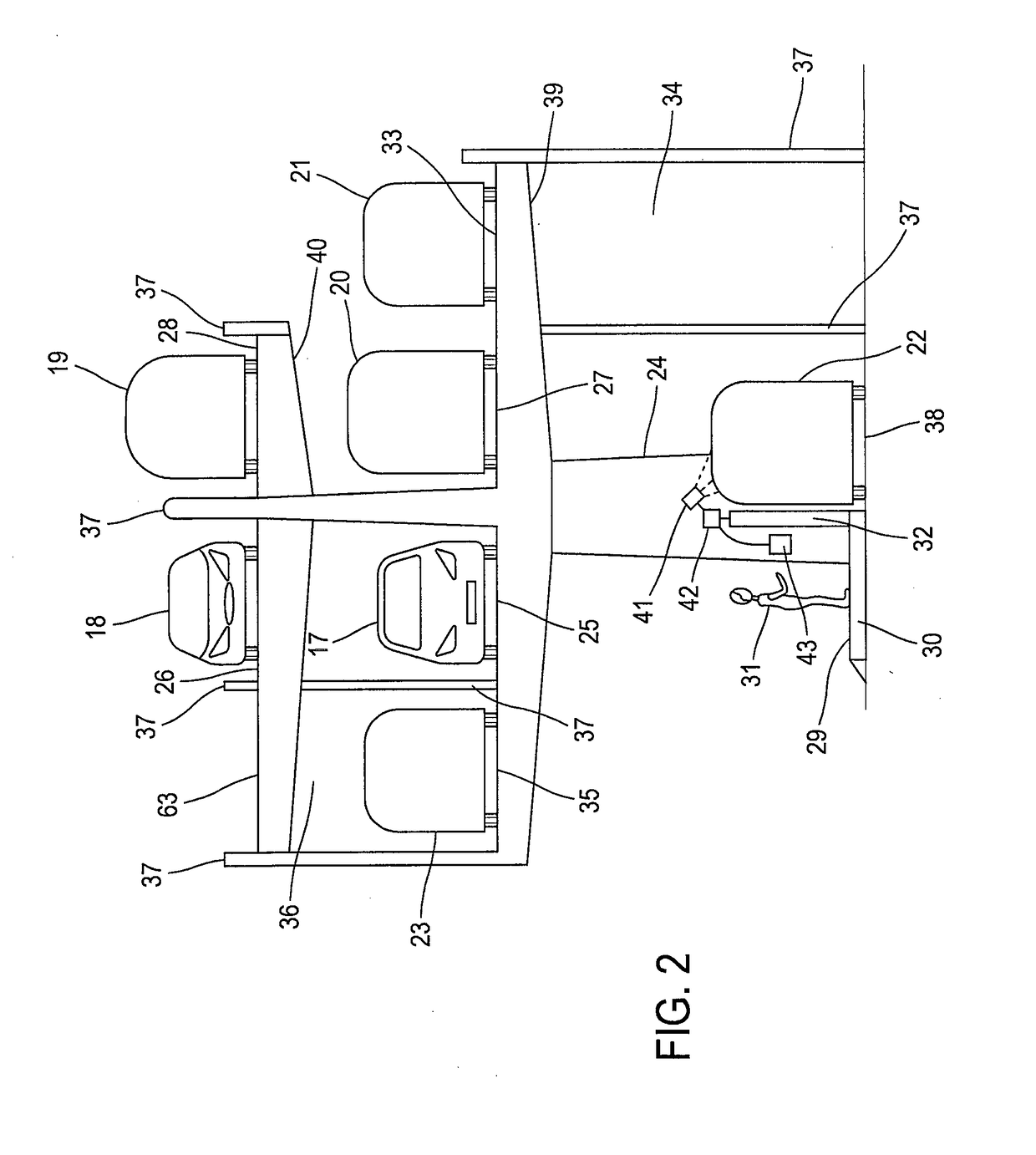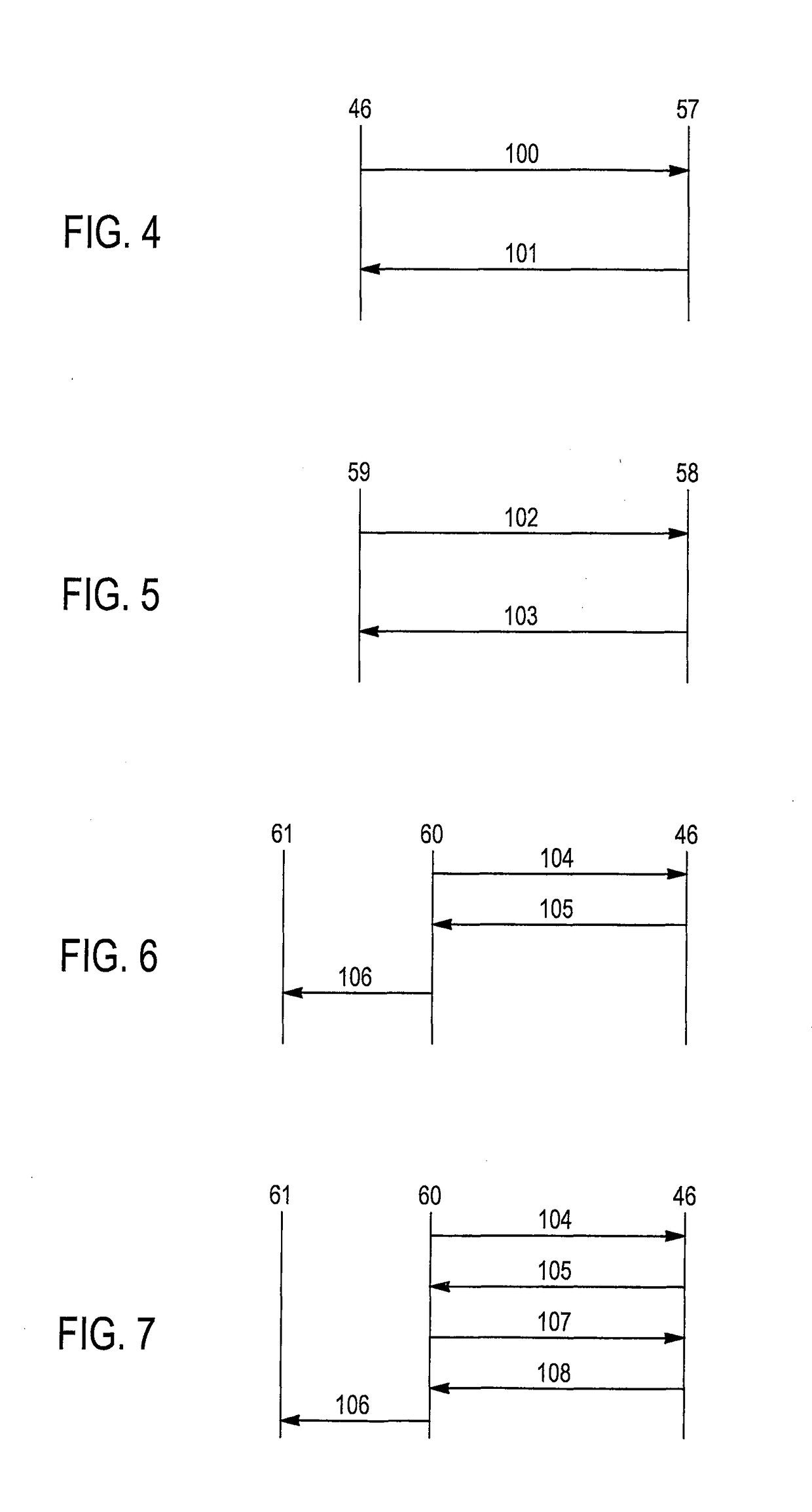Automatic transport system
a technology of automatic transportation and transportation system, applied in the field of transportation, can solve the problems of difficult to make vehicles operate in the real-life environment, difficulty in full-scale introduction of this technology, and difficulty in real-life environment, and achieve the effect of avoiding bottlenecks, avoiding congestion, and stable inter-vehicle distances
- Summary
- Abstract
- Description
- Claims
- Application Information
AI Technical Summary
Benefits of technology
Problems solved by technology
Method used
Image
Examples
Embodiment Construction
[0082]The transport system seeks both to transport individuals in automotive vehicles and in public transport shuttles. The automotive vehicles like the public transport shuttles of the transport system according to the invention are all able to operate in an automatic mode of operation, which means to say with no intervention by a driver.
[0083]FIG. 1 partially and schematically illustrates the intrastructure 1 of the transport system 1 according to one embodiment. The infrastructure 1 here comprises two one-way high-speed-traffic lanes 2, 3, 4, 5 for each of the two directions of travel. circulation. Each of the high-speed-traffic lanes 2, 3, 4, 5 has no intersection, no crossing, no stopping points, namely has no traffic lights or stop panels. The high-speed traffic lanes 2, 3, 4, 5 allow a plurality of entry zones 6 and exit zones 7 for motor vehicles and a plurality of stations 8 for the public transport shuttles to be interconnected to create a hybrid transport network.
[0084]As...
PUM
 Login to View More
Login to View More Abstract
Description
Claims
Application Information
 Login to View More
Login to View More - R&D
- Intellectual Property
- Life Sciences
- Materials
- Tech Scout
- Unparalleled Data Quality
- Higher Quality Content
- 60% Fewer Hallucinations
Browse by: Latest US Patents, China's latest patents, Technical Efficacy Thesaurus, Application Domain, Technology Topic, Popular Technical Reports.
© 2025 PatSnap. All rights reserved.Legal|Privacy policy|Modern Slavery Act Transparency Statement|Sitemap|About US| Contact US: help@patsnap.com



